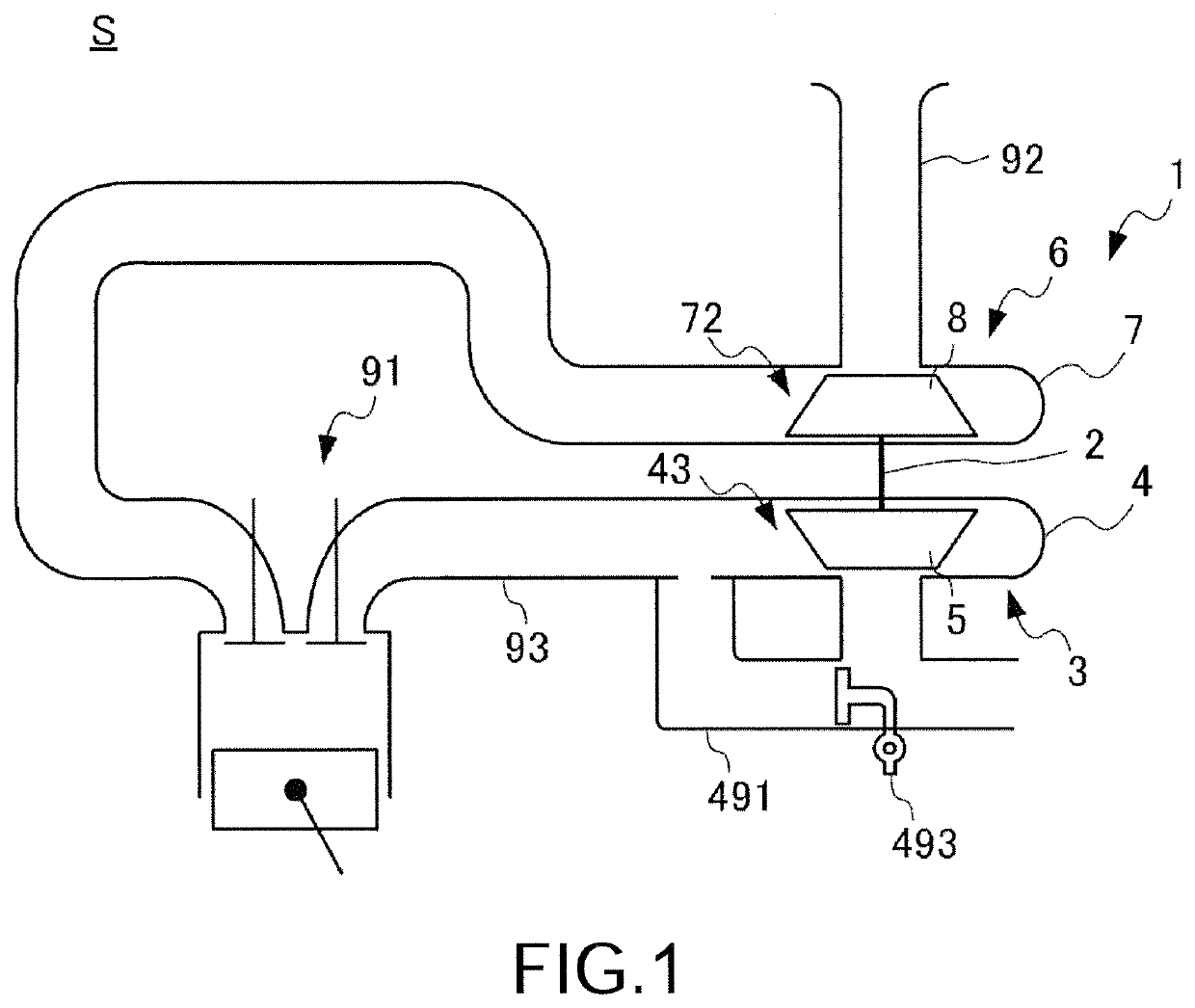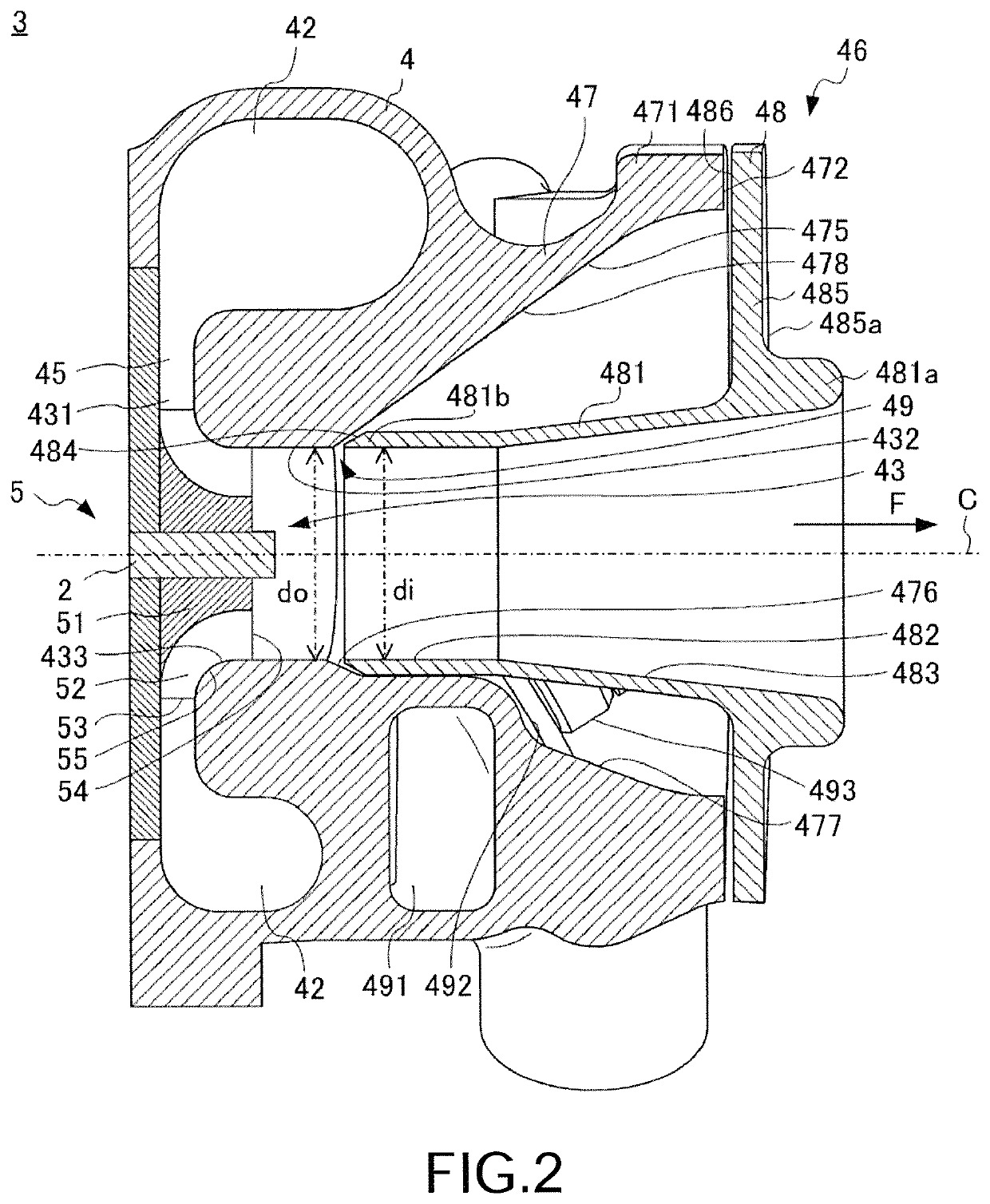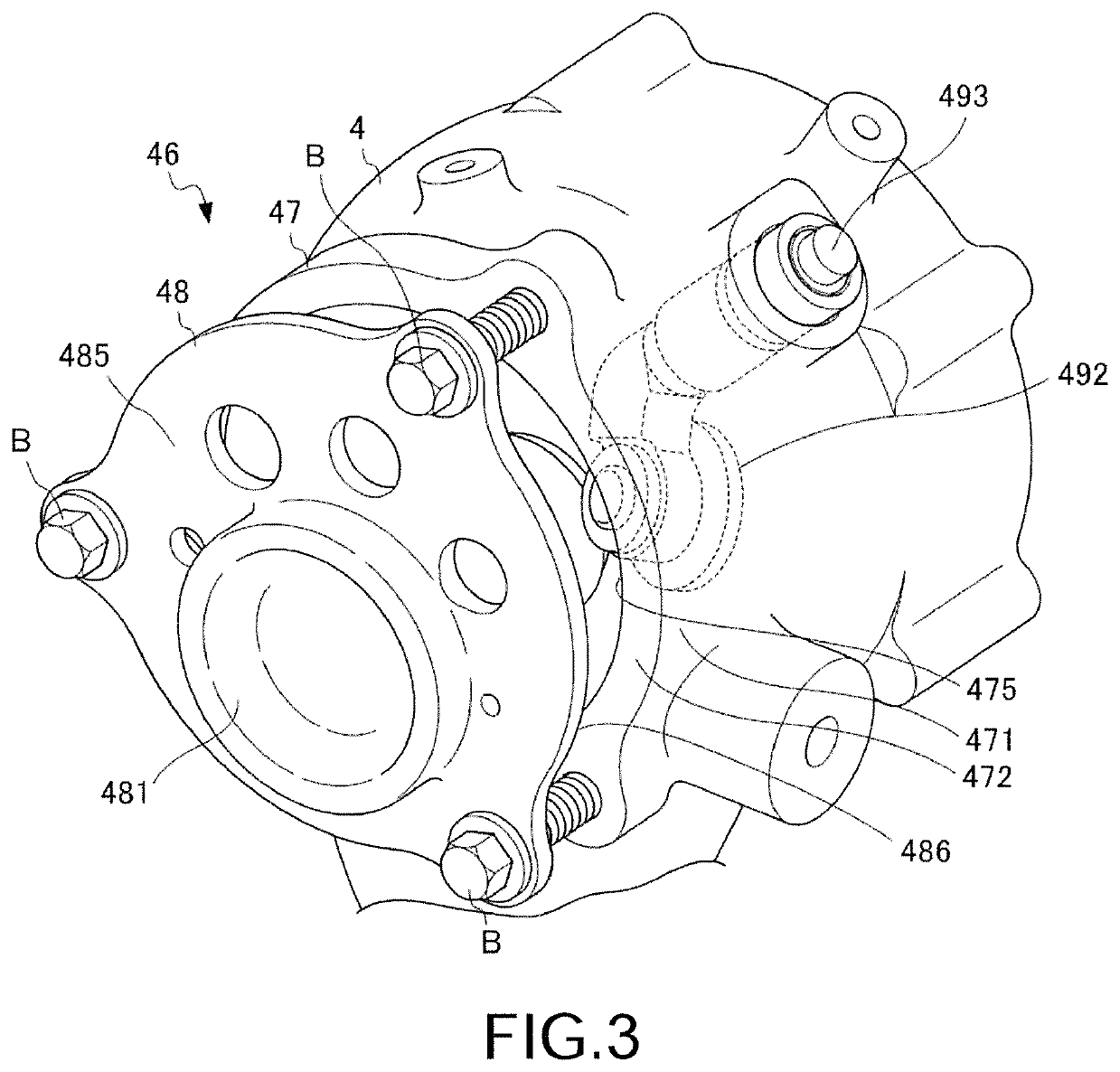Turbine
a turbine and turbine technology, applied in the field of turbines, can solve the problems of inability to achieve the deceleration effect, and achieve the effects of suppressing the drop of turbine efficiency, preventing the release of heat in the impeller chamber, and suppressing the increase of pressure loss in the outflow portion
- Summary
- Abstract
- Description
- Claims
- Application Information
AI Technical Summary
Benefits of technology
Problems solved by technology
Method used
Image
Examples
Embodiment Construction
[0029]Hereinafter, an embodiment of the disclosure is described with reference to the figures.
FIG. 1 is a diagram showing the configuration of a supercharging system S of an internal combustion engine 91 to which a turbine 3 is applied according to the present embodiment.
[0030]The supercharging system S includes an intake flow passage 92 that introduces intake air to a combustion chamber of the internal combustion engine 91, an exhaust flow passage 93 that guides an exhaust gas discharged from the combustion chamber of the internal combustion engine 91, and a supercharger 1 that is configured by connecting a compressor 6 disposed in the intake flow passage 92 and the turbine 3 disposed in the exhaust flow passage 93 with a rotating shaft 2 and compresses the intake air by using energy of the exhaust gas.
[0031]The turbine 3 includes a turbine housing 4, a turbine impeller 5, a bypass flow passage 491, and a waste gate valve 493. The turbine housing 4 is formed with a turbine impeller...
PUM
 Login to View More
Login to View More Abstract
Description
Claims
Application Information
 Login to View More
Login to View More - R&D
- Intellectual Property
- Life Sciences
- Materials
- Tech Scout
- Unparalleled Data Quality
- Higher Quality Content
- 60% Fewer Hallucinations
Browse by: Latest US Patents, China's latest patents, Technical Efficacy Thesaurus, Application Domain, Technology Topic, Popular Technical Reports.
© 2025 PatSnap. All rights reserved.Legal|Privacy policy|Modern Slavery Act Transparency Statement|Sitemap|About US| Contact US: help@patsnap.com



